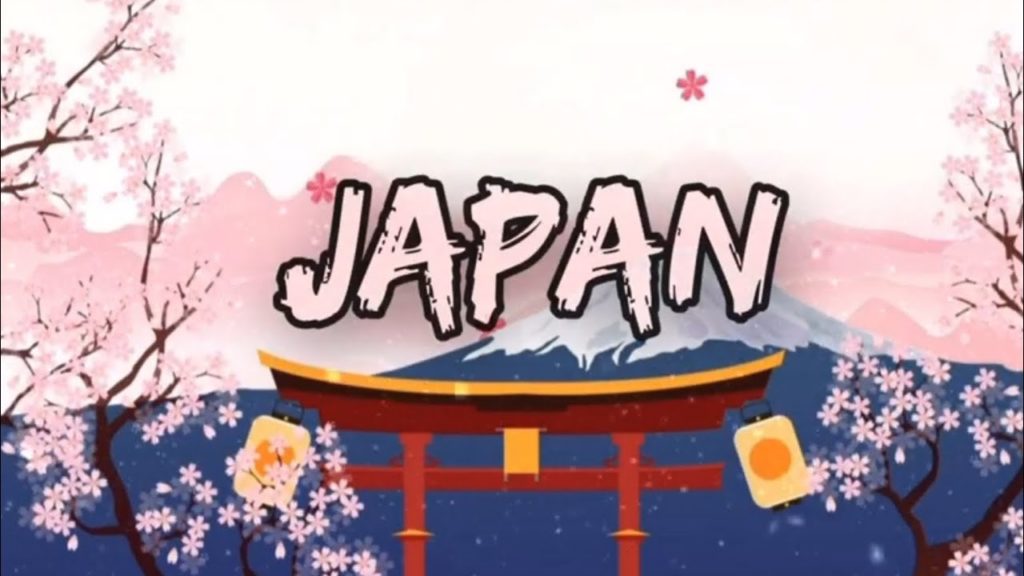This video presents the Japan’s…
1. HISTORY;
2. AREA AND LOCATION;
3. HOW TO GET THERE;
4. GEOGRAPHIC PROFILE;
5. POLITICAL PROFILE;
6. PEOPLE AND DIALECT SPOKEN;
7. POPULATION AND REGION;
8. PRODUCTS;
9. CUISINE/DELICACY
10. TOURIST ATTRACTION;
11. MUSIC, DANCE AND ARTS;
12. Map
Welcome to the land of the rising sun.
Japan
History
Prehistoric and Ancient Period
The prehistoric and ancient era of Japan covers the time up until 538 AD, including the Paleolithic (from 35,000 BC to 14,000 BC), Jomon (from 14,000 BC to 300 BC), Yayoi (from 300 BC to 250 AD), and Kofun (from 250 to 538) periods.
The earliest human beings to live in the Japanese archipelago existed during the Stone Age, specifically in the Paleolithic period. They are believed to have developed skills that enabled them to make tools from stone.
Eventually, they built the foundation of the Jomon culture, which is one of the world’s oldest societies, known for their hunting and gathering practices.
HOW TO GET THERE IN Japan
One of the most expensive parts about travel in Japan is the transportation. The trains and metros in Japan are some of the cleanest and most efficient in the world. So here is a list to help you get around Japan efficiently and still stay within your budget.
Japan Rail Pass
SEISHUN 18
This might be the ultimate affordable way to travel around Japan. But if you have the time, it is only 11,850 JPY for 5 days, so it is definitely a cheap way to travel.
Buses + METRO TRAINS
Buses might be a little bit confusing, but if you want to try it and travel through the city slowly, this might be a nice option.
Flight Ticket Package
Sometimes there are flight ticket packages available that are super affordable if you plan on going to areas around Japan you have to fly to get to. Domestic travel is made easier. Hokkaido, Okinawa, Fukuoka, Kagawa, Akita.
Geographic Profile
Japan is an archipelago, or string of islands, on the eastern edge of Asia. There are four main islands:
Hokkaido
Honshu
Shikoku
Kyushu
Japan’s nearest mainland neighbors are the Siberian region of Russia in the north and Korea and China farther south.
Political Profile
Japan has a constitutional monarchy, headed by an emperor. The country has a European-style civil law system.
The current emperor is Akihito; he wields very little political power, serving primarily as the symbolic and diplomatic leader of the country.
The political leader of Japan is the Prime Minister, who heads the Cabinet. Shinzō Abe is the current Prime Minister of Japan.
People and Dialect Spoken
Japanese people
are an ethnic group that is native to the Japanese archipelago and modern country of Japan, where they constitute 98.5% of the total population.
Nikkeijin- the Japanese dispora. People of Japanese ancestry who live outside Japan.
Japanese people are one of the largest ethnic groups in the world.
People in Japan speak languages from two main language families:
Japonic Languages
Ainu
The Japonic languages include different forms of Japanese, as well as the Ryukyuan languages.
The standard Japanese recognized today as the country’s national language is that which was spoken by the upper and middle classes in the Yamanote area around 1901. This is where Tokyo is today, Tokyo was known as Edo when it became the country’s capital at the beginning of the 17th century.
Ryukyuan Languages
The second sub-family in the Japonic language group is the Ryukyuan languages. UNESCO has identified eight minority languages as being endangered in Japan, and six of them are Ryukyuan.
Population and Regions
The current population of Japan is 126,244, 175 as of Friday, February 5, 2021, based on Worldometer elaboration of the latest United Nations data.
Japan ranks number 11 in the list of countries (and dependencies) by population.
Japan population is equivalent to 1.62% of the total world population.
Japan has 47 prefectures. On the basis of geographical and historical background, these prefectures can be divided into eight regions: Hokkaido, Tohoku, Kanto, Chubu, Kinki, Chugoku, Shikoku, and Kyushu-Okinawa.
Each region has its own dialect, customs, and unique traditional culture.
Kanto region, which includes Tokyo, and the Kansai region, which includes Osaka, offer striking contrasts in everything from the taste of food to the style of traditional performing arts, and people have fun comparing them.


AloJapan.com